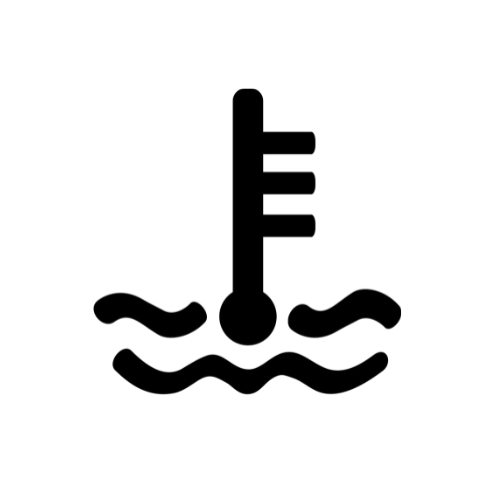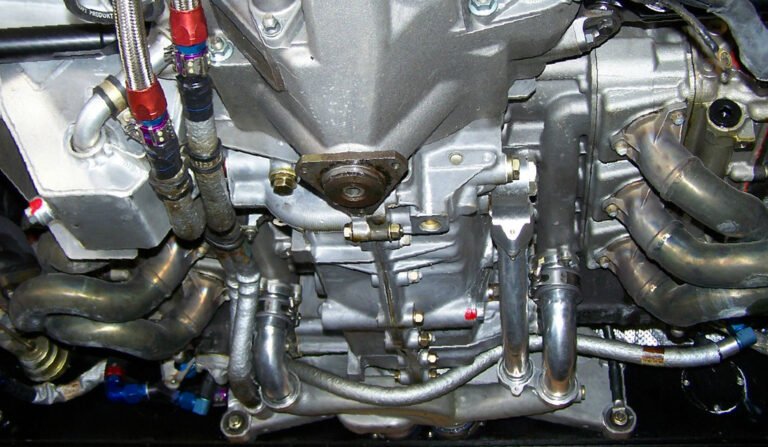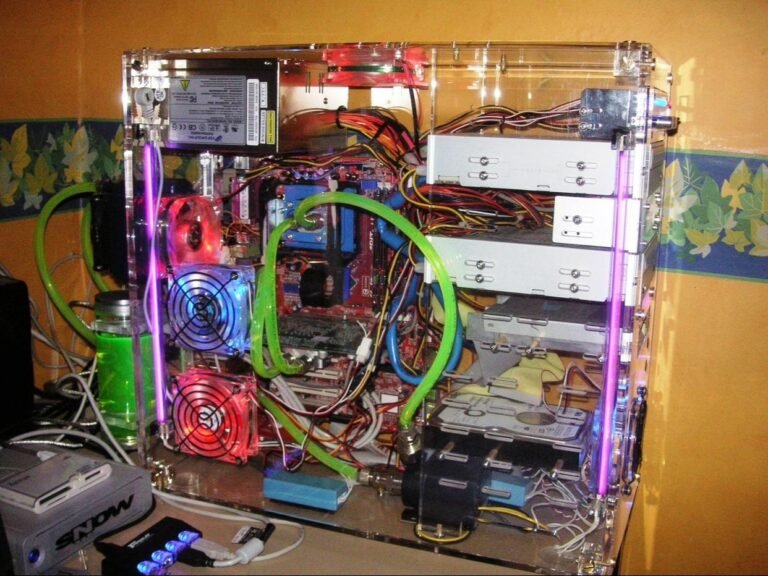Can Low Coolant Cause Transmission Problems? Vital Insights!
Yes, low coolant can cause transmission problems. It is important to maintain the proper coolant level in your vehicle to prevent damage to the transmission.
Proper vehicle maintenance is crucial to ensure optimal performance and prevent costly repairs. One often overlooked aspect is the coolant level, which plays a vital role in keeping the engine and transmission cool. We will explore the potential consequences of low coolant on the transmission system.
Understanding the relationship between coolant and transmission can help you identify and address any issues before they escalate into major problems. So, let’s delve into the impact of low coolant on your vehicle’s transmission and how you can prevent potential complications.
Linking Coolant And Transmission Health
Understanding the relationship between coolant and transmission health is crucial for maintaining the overall functionality of a vehicle. In this section, we will explore the significance of coolant in preserving the integrity of the transmission system and its role in ensuring the smooth operation of the vehicle.
The Role Of Coolant In Vehicle Function
Coolant plays a vital role in regulating the temperature of the engine, which indirectly affects the performance of the transmission system. It absorbs heat generated by the engine and dissipates it through the radiator, preventing overheating and potential damage to the transmission components.
Maintaining the appropriate coolant level and quality is essential for preventing transmission problems. Low coolant levels can lead to increased engine temperatures, which may impact the transmission’s ability to function optimally.
Transmission System Basics
The transmission system is responsible for transferring power from the engine to the wheels, enabling the vehicle to move forward or backward at varying speeds. It consists of various components such as gears, clutches, and hydraulic systems, all of which rely on proper cooling to function efficiently.
Inadequate cooling due to low coolant levels can result in increased friction and heat within the transmission, potentially leading to premature wear and tear, fluid degradation, and ultimately, transmission malfunctions.
Symptoms Of Low Coolant Levels
Low coolant levels can lead to transmission problems, causing overheating and potential damage. Symptoms include erratic shifting and transmission slipping, indicating the need for immediate attention to prevent costly repairs. Regularly checking coolant levels is crucial for optimal vehicle performance and longevity.
Engine Overheating Signs
When the coolant level is low, the engine may overheat, and this can lead to significant damage to the transmission. There are several signs of engine overheating that you should look out for, including:
- The temperature gauge shows that the engine is overheating
- The engine emits a burning smell
- The engine emits steam or smoke
- You hear a knocking or ticking noise from the engine
- The engine misfires or stalls
If you notice any of these signs, you should immediately pull over to the side of the road and turn off the engine. Continuing to drive with an overheating engine can cause severe damage to the transmission and other parts of the vehicle.
Warning Lights On Dashboard
Another symptom of low coolant levels that can cause transmission problems is warning lights on the dashboard. If you see a warning light indicating that the engine is overheating or that the coolant level is low, you should take immediate action.
Ignoring these warning signs can lead to severe damage to the transmission and other parts of the vehicle. The best course of action is to pull over and turn off the engine as soon as possible.
Low coolant levels can cause significant damage to the transmission and other parts of the vehicle. It is essential to monitor your coolant levels regularly and take immediate action if you notice any of the symptoms mentioned above.
By being proactive and taking care of your vehicle, you can avoid costly repairs and keep your car running smoothly for years to come.
Transmission Troubles From Overheating
Transmission problems can be caused by a variety of factors, but one of the most common is overheating. When your transmission overheats, it can cause serious damage to the internal components, including the fluid and the seals. One of the main causes of overheating is low coolant levels. In this section, we will discuss the impact of heat on transmission fluid and the symptoms of transmission problems caused by overheating.
Heat’s Impact On Transmission Fluid
Transmission fluid is responsible for lubricating the internal components of your transmission and keeping them cool. When the transmission overheats, the fluid can break down and lose its ability to lubricate and cool the components. This can cause the transmission to slip, which can lead to serious damage if not addressed promptly.
Additionally, high temperatures can cause the transmission fluid to oxidize, which can lead to the formation of harmful sludge and varnish. This can clog the transmission’s internal passages and prevent it from shifting properly.
Symptoms Of Transmission Problems
There are several symptoms that can indicate a transmission problem caused by overheating. If you experience any of these symptoms, it is important to have your vehicle inspected by a mechanic as soon as possible:
- Difficulty shifting gears
- Slipping gears
- Burning smell coming from the transmission
- Delayed engagement when shifting into gear
- Loud noises coming from the transmission
Ignoring these symptoms can lead to serious damage to your transmission and costly repairs. It is important to have your vehicle inspected and repaired as soon as possible if you suspect a transmission problem caused by overheating.
Coolant System Leaks And Transmission
When it comes to the health of your vehicle, understanding the potential impact of low coolant levels on the transmission system is crucial. In this section, we’ll explore the relationship between coolant system leaks and transmission issues, focusing on the identification of coolant leaks and the consequences of ignoring them.
Identifying Coolant Leaks
Leaking coolant can often be identified by visually inspecting the engine bay and checking for pooling liquid beneath the vehicle. Additionally, a sweet smell or white smoke coming from the exhaust may indicate a coolant leak. Monitoring the coolant level and observing any rapid or unexplained decreases can also help in identifying potential leaks.
Consequences Of Ignored Leaks
Ignoring coolant leaks can lead to severe consequences for the transmission system. The lack of proper cooling in the engine can cause overheating, leading to accelerated wear and potential damage to transmission components. Over time, this can result in costly repairs and a significant impact on the overall performance of the vehicle.
The Science Behind Coolant And Transmission Links
Low coolant levels can lead to transmission problems as the transmission fluid relies on the engine’s cooling system to maintain its temperature. Insufficient coolant can cause the transmission to overheat, leading to potential damage and performance issues. It’s crucial to regularly check and maintain proper coolant levels to ensure optimal transmission function.
Thermal Regulation In Engines
Engines generate a significant amount of heat during operation, and proper thermal regulation is crucial for their optimal performance and longevity. This is where coolant plays a vital role. Coolant, also known as antifreeze, is a liquid substance that circulates through the engine’s cooling system, absorbing heat and dissipating it through the radiator. By maintaining the engine’s operating temperature within the desired range, coolant prevents overheating and protects various engine components from damage.
Coolant-transmission Interactions
While coolant primarily focuses on regulating engine temperature, it can also have indirect effects on the transmission system. In some vehicles, the transmission fluid cooler is integrated into the radiator, allowing the coolant and transmission fluid to interact. This integration serves two purposes: cooling the transmission fluid and warming up the coolant during cold starts.
During operation, transmission fluid generates heat as it lubricates and cools the transmission components. By passing through the transmission fluid cooler within the radiator, the coolant helps dissipate this excess heat, preventing the transmission from overheating. This collaboration between the coolant and transmission fluid ensures that both systems function optimally and avoids potential transmission problems caused by excessive heat buildup.
In addition to cooling the transmission fluid, the coolant also aids in warming up the engine and transmission during cold starts. When the engine is cold, the thermostat restricts coolant flow through the radiator, directing it towards the engine and transmission. This process helps raise the temperature of both systems to their optimal operating conditions quickly. By ensuring proper lubrication and reducing internal friction, the warm transmission fluid enhances the transmission’s overall performance and minimizes wear.
Preventative Measures For Coolant Maintenance
Regular Coolant Checks
Regular coolant checks are essential to ensure that the coolant level is adequate and that there are no visible signs of leaks or contamination. Perform these checks at least once a month or before embarking on long journeys.
The Importance Of Coolant Flushes
Coolant flushes are crucial to remove any accumulated debris, contaminants, and old coolant from the system. This process helps in maintaining the effectiveness of the coolant and prevents corrosion and overheating.
Diagnosing Transmission Issues Related To Coolant
Low coolant levels can potentially cause transmission problems. If the coolant is too low, it can lead to overheating of the transmission, which can result in damage and failure. It is important to diagnose any transmission issues related to coolant levels to prevent further damage and ensure smooth operation of your vehicle.
Professional Diagnostic Techniques
Diy Inspection Tips
Diagnosing Transmission Issues Related to Coolant
Low coolant levels can lead to transmission problems.
Professional Diagnostic Techniques
– Consult a mechanic for thorough inspection.
– Use diagnostic tools to analyze transmission.
– Check for coolant contamination in transmission fluid.
DIY Inspection Tips
– Inspect coolant levels and quality regularly.
– Look for signs of transmission fluid contamination.
– Monitor transmission performance for abnormalities.
Fixing Coolant And Transmission Problems
Low coolant can lead to transmission issues. It’s crucial to address coolant leaks promptly to prevent further damage.
Repair Options For Leaks
- Identify leak location
- Tighten loose connections
- Replace damaged hoses or seals
When To Seek Professional Help
- Signs of major leaks
- Transmission slipping
- Overheating engine
Long-term Impacts On Vehicle Performance
Low coolant levels can lead to transmission problems, affecting the performance of your vehicle over time.
Durability Of Transmission Components
Continuous low coolant can overheat the transmission, causing wear and potential damage.
- Heat from low coolant can weaken seals, leading to leaks.
- Reduced lubrication due to overheating can accelerate wear on parts.
Ensuring Vehicle Longevity With Proper Maintenance
Regularly check coolant levels and flush the system as recommended by the manufacturer.
- Maintain proper coolant levels to protect the transmission.
- Schedule routine maintenance to prevent long-term issues.
Conclusion
Ensuring proper coolant levels is crucial for smooth transmission function. Low coolant can lead to overheating and potential transmission issues. Regular maintenance checks are key to preventing costly repairs down the line. Stay proactive in monitoring coolant levels to keep your transmission running smoothly.

At CoolantInCar, we are dedicated to demystifying the world of engine coolant and cooling systems.

